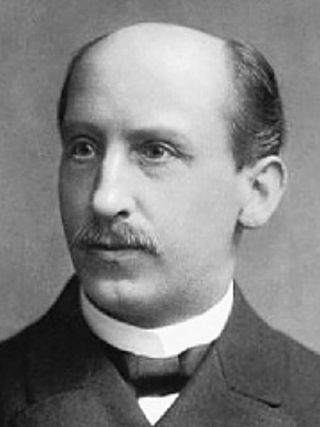Top Qs
Timeline
Chat
Perspective
Rainer Ludwig Claisen
German chemist (1851–1930) From Wikipedia, the free encyclopedia
Remove ads
Rainer Ludwig Claisen (German pronunciation: [ˈʁaɪnɐ ˈklaɪzn̩]; 14 January 1851 – 5 January 1930) was a German chemist best known for his work with condensations of carbonyls and sigmatropic rearrangements. He was born in Cologne as the son of a jurist and studied chemistry at the university of Bonn (1869), where he became a member of K.St.V. Arminia. He served in the army as a nurse in 1870–1871 and continued his studies at Göttingen University. He returned to the University of Bonn in 1872 and started his academic career at the same university in 1874. He died in 1930 in Godesberg am Rhein (near Bonn).
Remove ads
Career
| 1874 | Promotion at the University of Bonn; position at Kekulé's laboratory |
| 1878 | Habilitation as Privatdozent at the University of Bonn |
| 1882 | Worked with Henry Roscoe and Carl Schorlemmer at Owens College, Manchester (until 1885) |
| 1886 | Worked at the laboratory of von Baeyer (University of Munich) |
| 1887 | Habilitation as Privatdozent at the University of Munich |
| 1890 | Position as Professor ordinarius of organic chemistry at TH Aachen |
| 1897 | Position as Professor ordinarius of chemistry at the University of Kiel |
| 1904 | Honorarprofessor at the University of Berlin, collaboration with Emil Fischer |
| 1907 | Emeritus; starts his own private laboratory in Godesberg am Rhein |
Remove ads
Scientific contributions
- Described the condensation of aromatic aldehydes with aliphatic aldehydes or ketones in 1881. This variation of the now well-known aldol condensation reaction is called the Claisen–Schmidt condensation.
- Discovered (1887) the condensation reaction of an ester with an activated methylene group, now known as the Claisen condensation.
- Synthesis of cinnamates by reacting aromatic aldehydes with esters. The reaction is known as the Claisen reaction and was described by Claisen for the first time in 1890.
- Discovered the thermally induced rearrangement of allyl phenyl ether in 1912. He details its reaction mechanism in his last scientific publication (1925). In his honor, the reaction has been named the Claisen rearrangement.
- Synthesis of isatin via a process known as the Claisen isatin synthesis, described for the first time in 1879.
- Designer of a special distillation flask called the Claisen flask.[note 1][1] With the increased modularity of modern glassware this functionality is often achieved with a Claisen adapter, of which there are many types, attached to a normal flask.
Remove ads
See also
References
Notes
Wikiwand - on
Seamless Wikipedia browsing. On steroids.
Remove ads

